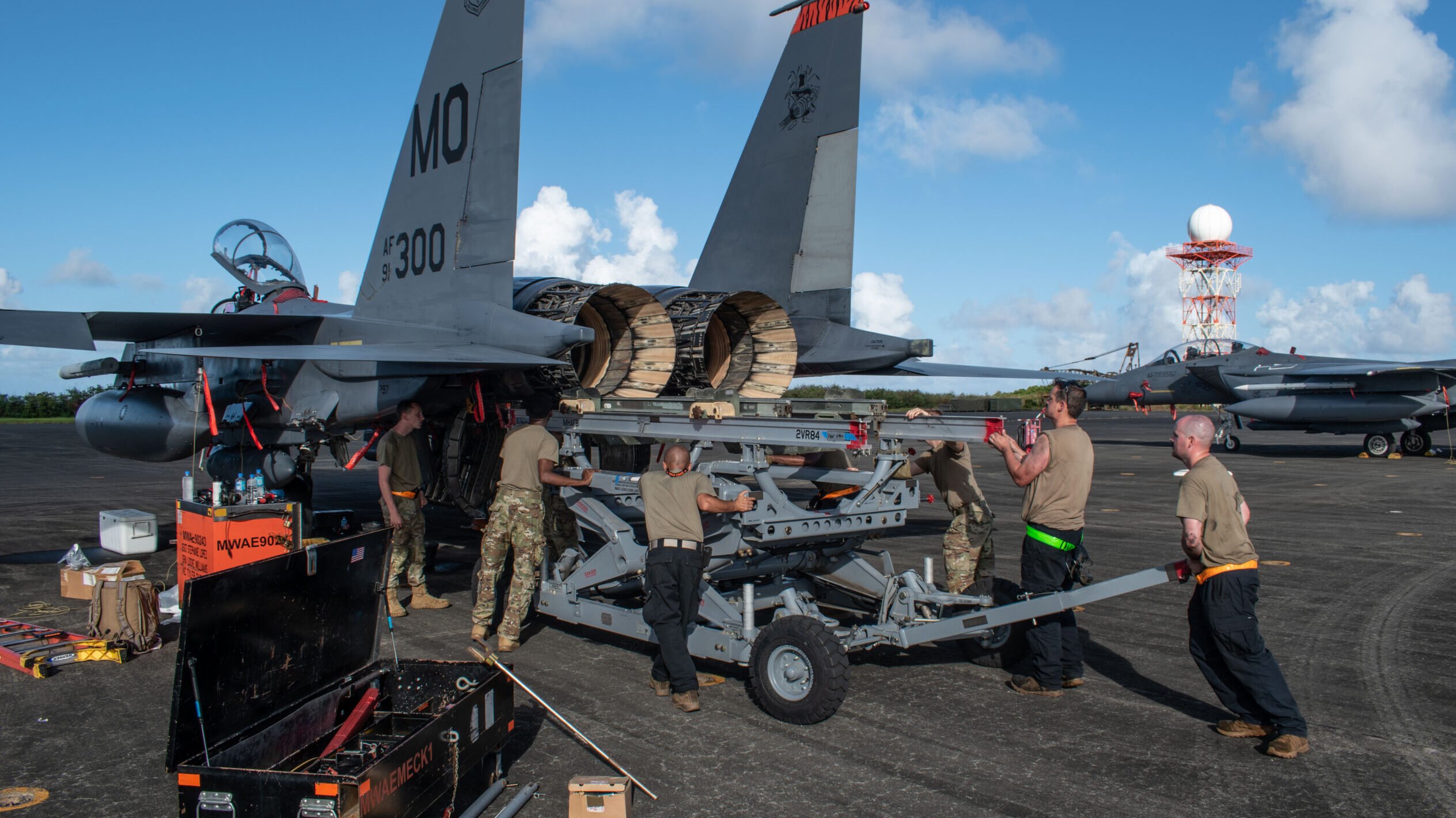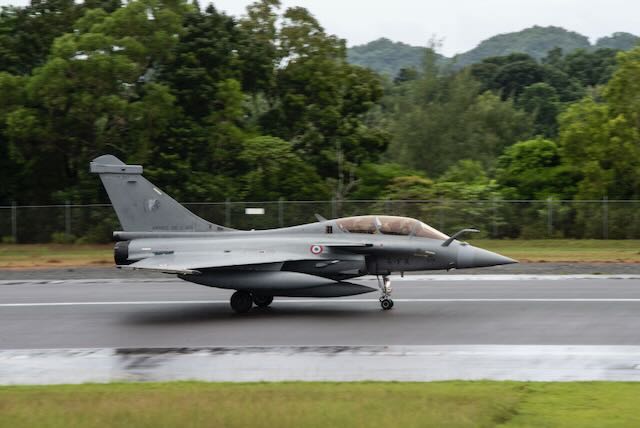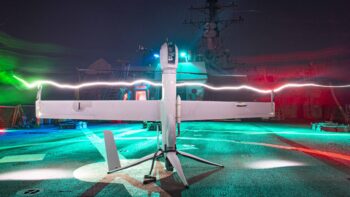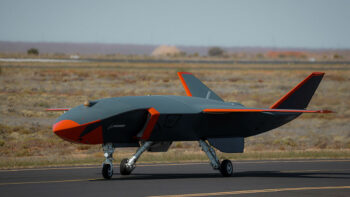
F-15 getting new engine at island of Iwo-To during Northern Edge Pacific 2023. (U.S. Air Force photo by Senior Airman Timothy Janzow)
SYDNEY — You’re far from a major air base with all the support and mechanics they can offer when one of your F-15 engines fails — and you’ve got to get back the air as quickly as possible to keep pounding away at your enemy somewhere in the Pacific Ocean. What do you do?
Answering that question was one of the highlights of the first Northern Edge 2 exercise in the warmer parts of the Pacific Ocean, testing key concepts such as agile basing across waters much closer to China. The exercise — normally flown in the far north of Alaska and its waters — began July 2 and continued through July 21. Breaking Defense interviewed three US Air Force pilots about lessons from the exercise on July 19.
When one of Lt. Col. Jon “Ghost” White’s F-15s had to return early on July 9 to Iwo-to (the island formerly known as Iwo Jima) during the second phase of Northern Edge, the challenges of distance and support were foremost in his mind.
“So, as we brought a fairly small maintenance package to reduce the reduce the amount of airlift required to move us around, right — you’ve got to make choices. And so we chose to bring the moving parts and personnel to work on the most likely things that would go wrong, while minimizing our footprint,” he said. “We do some troubleshooting, and we’ve got to get a whole new engine.”
They immediately contacted Iwakuni, their main base, and were able to get an engine loaded on a C-130. The cargo flight made it to Iwo-To and the maintainers offloaded the motor. “They were getting the equipment set up to pull the old engine out of the Strike Eagle and replace it with the new one,” within about half an hour, White says. “They worked basically until the end of their duty day, got up early the next morning to finish it off, ran the engine and had it ready to go within about 12 hours of the C-130 touching down.”
They fired it up and flew to their next tasking, “a pretty incredible feat,” he said.
That kind of effort will be essential to making Agile Combat Employment (ACE), as the term of art is known, useful. The idea is to move aircraft across the Pacific, making it much more difficult for the Chinese — or anyone else — to destroy US and allied aircraft sitting comfortably at large bases, as famously happened at Pearl Harbor and in the Philippines at the beginning of America’s entry into World War II. It’s not a hypothetical concern: The Chinese have made it clear, for example, that they want America to know they can target the crucial airfields on Guam and recently deployed the Shandong aircraft carrier strike group near Guam.
In a smaller scale version of the engine replacement, one of the F-35As used in the exercise sprang a hydraulic leak from a brake after landing at the small Pacific island state of Palau. Pilots got on the radio to Guam and a coalition C-130 about to head their way carried the necessary parts. “We had that jet back up and ready to go into action within four-and-half hours, which is amazing,” Maj. Chris “Kosmo” Cady, an F-35 pilot with the 466th Fighter Squadron, said.
At a main base, with all its people and parts, such a fix would normally take half an hour, according to Cady. And most of the elapsed time was spent ferrying the parts from Guam to Palau.
 A French Rafale lands in Koror, Palau on July 7, 2023 in support of Northern Edge 23-2. U.S. Air Force photo by 1st Lt. Michelle Chang
A French Rafale lands in Koror, Palau on July 7, 2023 in support of Northern Edge 23-2. U.S. Air Force photo by 1st Lt. Michelle Chang
Cady had one other example of how agile basing drove unorthodox responses, one akin to wartime operations. It involved one of the French Rafale fighters taking part, along with the Japanese Self Defense Force, which needed a replacement part. The team communicated with Guam, found the part and got it loaded on an F-35A headed that way, he said.
Overlapping the Northern Edge Pacific exercise is Mobility Guardian 2023, which began July 13. Mobility Guardian includes more than 15,000 troops from Australia, Canada, France, Japan, New Zealand, the United Kingdom and the United States and is officially billed as “(US) Air Mobility Command’s largest ever full-spectrum readiness exercise in the command’s history.” They’ll demonstrate interoperability in “operationally limited environments” areas such as airlift, aerial refueling, medical evacuation, command and control, and humanitarian assistance, says an official story announcing the exercise. It takes place across Hawaii, Guam, Australia and Japan. It’s the first time this exercise has been held in the Pacific.






















